

Matt Campbell
2026 Hyundai Tucson Hybrid review
5 Hours Ago
Ignore the black wheels and racy orange highlights – the Subaru Forester 2.5i Sport isn't some turbocharged rocketship. It is, however, a competent, sensible mid-sized SUV.
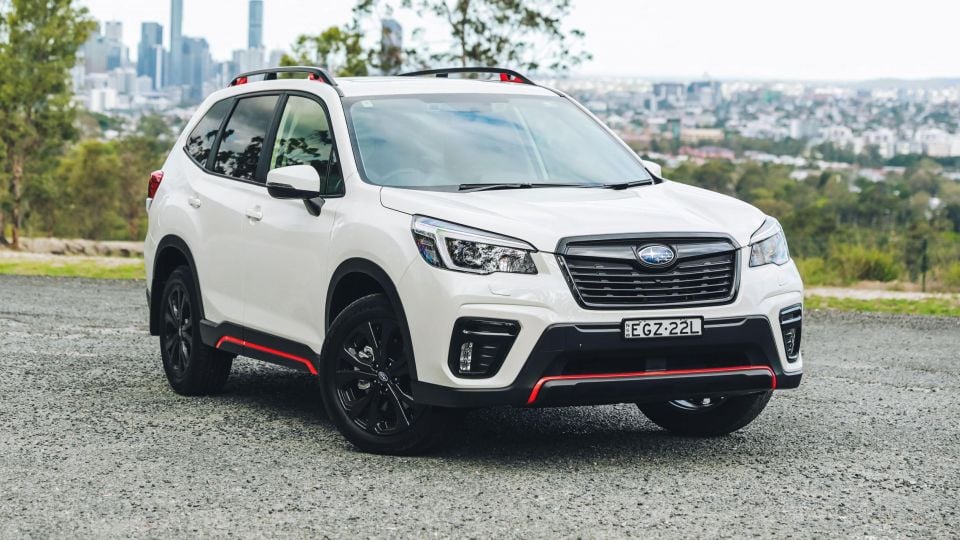
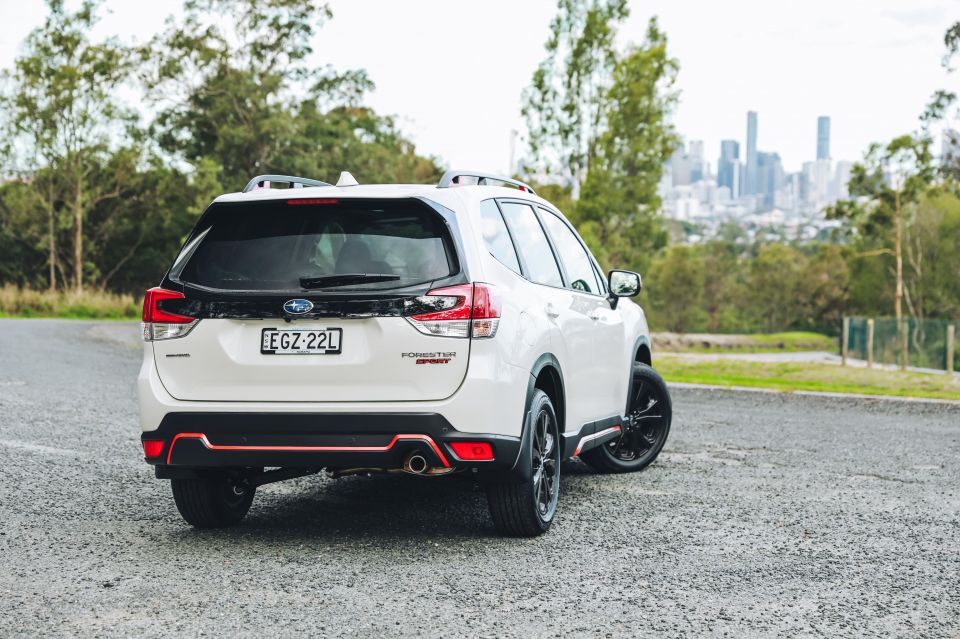

News Editor
New from
$34,690
excl. on-roads

News Editor
New from
$34,690
excl. on-roads


News Editor
New from
$34,690
excl. on-roads

News Editor
New from
$34,690
excl. on-roads
Quickly see how this car stacks up against its competition. Select any benchmark to see more details.
Where expert car reviews meet expert car buying – CarExpert gives you trusted advice, personalised service and real savings on your next new car.
The Subaru Forester is not only one of Australia’s most popular mid-sized SUVs, it’s also one of the oldest nameplates in the segment. Along with the Honda CR-V and Toyota RAV4 it’s part of the Japanese old guard, all of them dating back to the mid-1990s.
Like its RAV4 rival, the Forester now offers a hybrid powertrain. But the fifth generation of Subaru’s mid-sized SUV is the first to not offer a performance variant with a turbocharged engine. Gone, too, is the option of a turbo-diesel.
For 2021, Subaru added a new 2.5i Sport variant. Sadly, it’s not turbocharged like the old XT but it offers a sportier look for not much more than the mid-range Premium. But does the Forester offer enough to stand out among its many, many rivals?

The petrol Forester ranges from $35,190 before on-road costs for the base 2.5i to $43,490 before on-roads for the 2.5i-S.
The 2.5i Sport is priced at $41,990 before on-road costs, putting it towards the top of the Forester range.
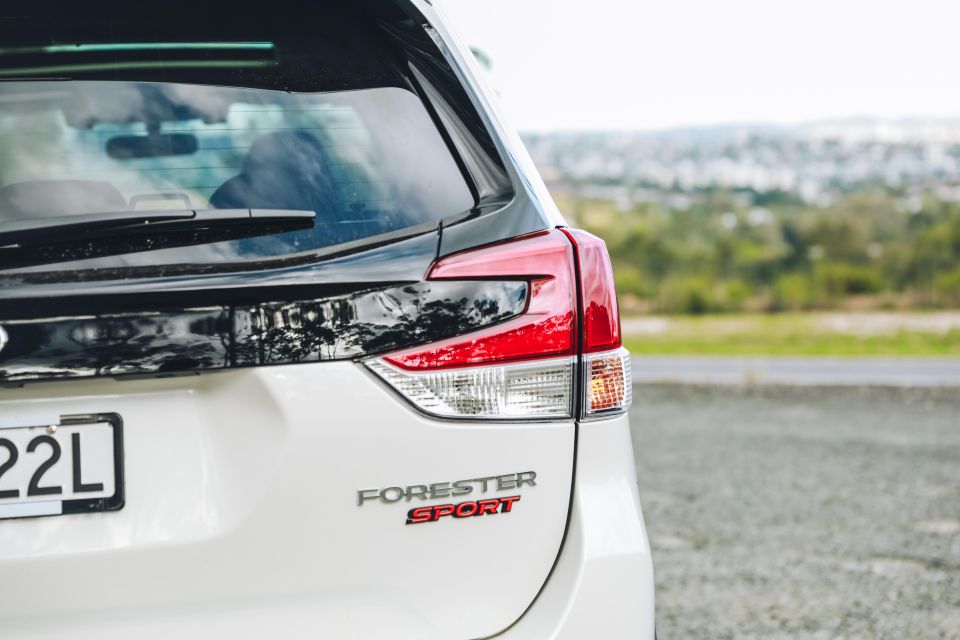
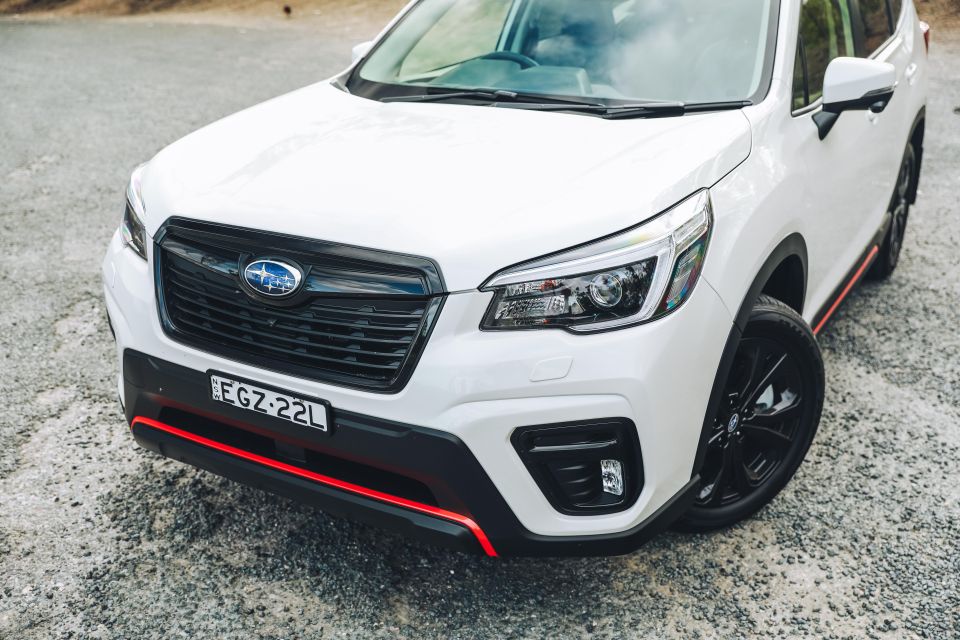
That also puts it up against similarly-priced all-wheel drive rivals like the sporty-looking Ford Escape ST-Line ($40,990), updated Honda CR-V VTi L ($40,490), Mazda CX-5 Touring ($40,980), Toyota RAV4 GXL Hybrid ($42,915) and Volkswagen Tiguan 132TSI Comfortline ($43,990).
There are also rivals that will be replaced in the next year or so, like the Hyundai Tucson Elite 1.6T ($41,200), Mitsubishi Outlander Exceed ($43,990) and Nissan X-Trail ST-L ($39,850).
That’s just looking at petrol-powered, all-wheel drive rivals. Loosen your requirements a bit and there’s even more on offer at this price point – there are few segments with a wider range of models on offer than the mid-sized SUV segment.
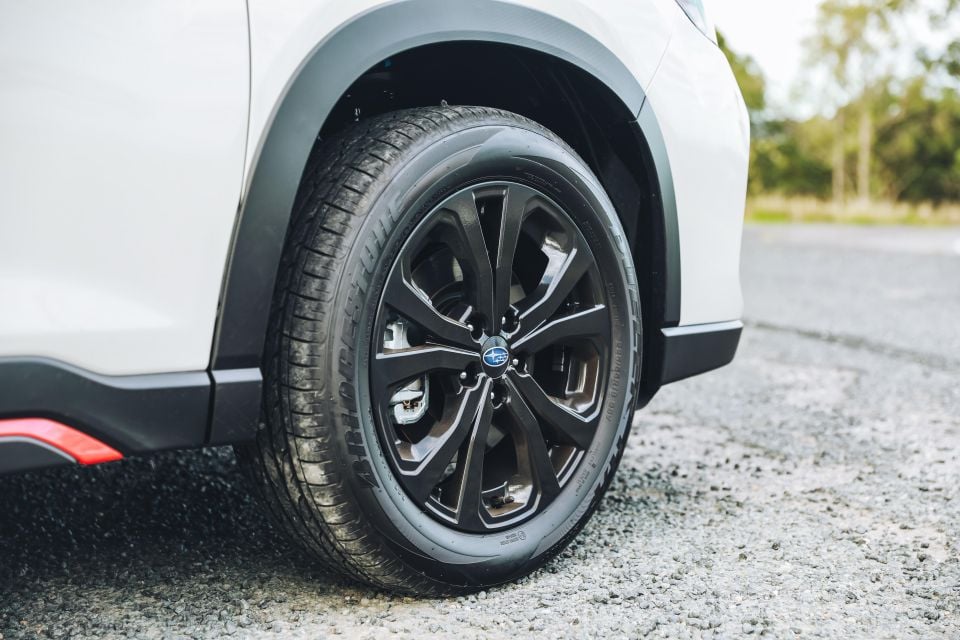

Buy your new car without the stress. It's fast, simple and completely free.

Great service from Travis and team, second time I have used this business would not hesitate to recommend them to anyone
Craig C.
Purchased a Ford Ranger in Sunshine Coast, QLD
CarExpert helped Craig save thousands on his Ford Ranger, now let us save you on your next new car.
Find a dealThe Forester has some features standard in the very base model you’ll have to climb rival model ranges to get your hands on. All Foresters, for example, come standard with adaptive cruise control, keyless entry and start, automatic LED headlights with active cornering, front fog lights, dual-zone climate control, and one-touch electronic folding rear seats.
You have to step up to the Premium or higher to get a larger, 8.0-inch touchscreen infotainment system with satellite navigation, though even the base 6.5-inch unit has wired Apple CarPlay, Android Auto and DAB+ digital radio. The Premium also adds a power tailgate and eight-way power front seats with driver’s memory.
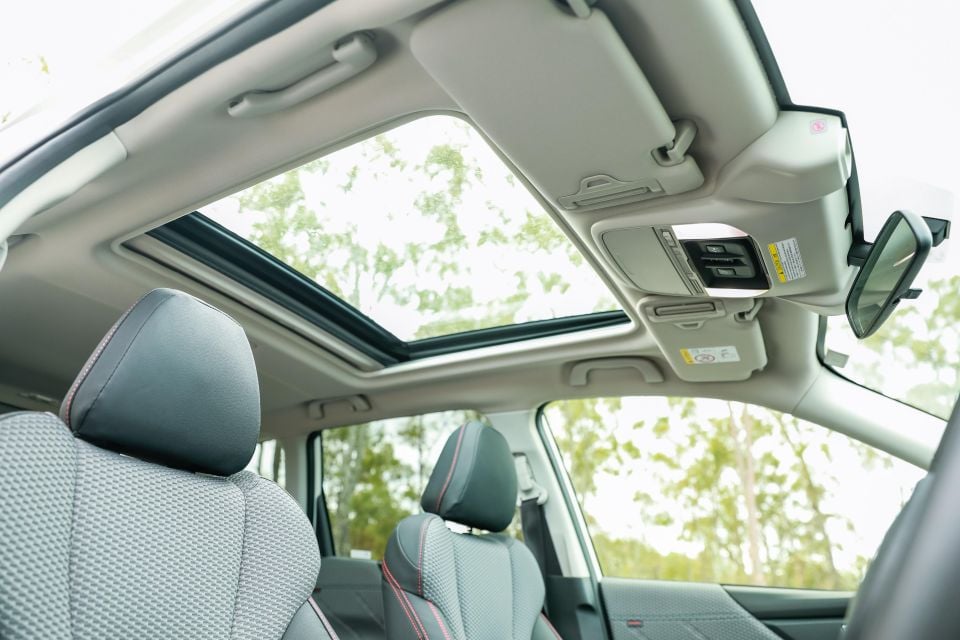

The Sport sits atop the Premium and adds LED front fog lights and a sunroof, as well as 18-inch alloy wheels in a dark metallic finish, black and orange exterior trim, water-repellant grey cloth upholstery, and additional orange highlights inside.
That’s in addition to standard equipment available elsewhere in the range, including a six-speaker sound system, heated front seats, a leather-wrapped steering wheel, adaptive high-beam and rain-sensing wipers.
An extra $1500 gets you the range-topping 2.5i-S, which adds leather upholstery and an eight-speaker Harman Kardon sound system. You’ll miss out on the sporty trim, though.

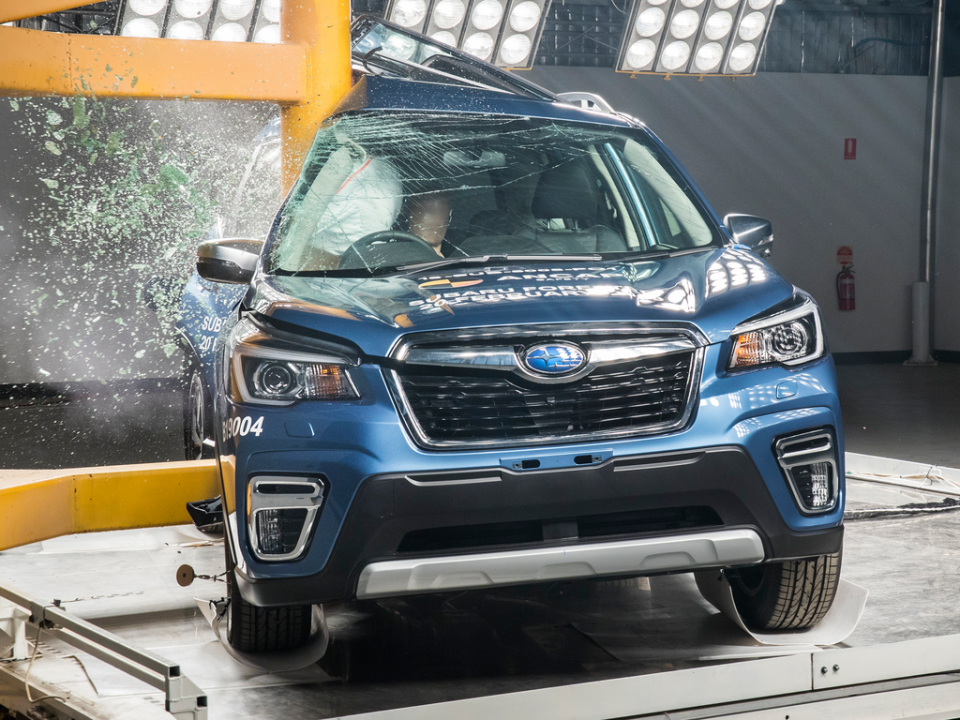
ANCAP awarded the Subaru Forester five starsin 2019, based on scores of 94 per cent for adult occupant protection, 86 per cent for child occupant protection, 80 per cent for vulnerable road user protection, and 78 per cent for safety assist functions.
All 2021 Subaru Forester models, including the Sport, come standard with forward and reverse autonomous emergency braking, blind-spot monitoring, rear cross-traffic alert, lane-departure warning and lane-keeping assist.
Subaru also offers both reverse autonomous emergency braking and its clever EyeSight as standard in all bar the base Forester. The latter uses a facial recognition camera to detect driver drowsiness or distraction.
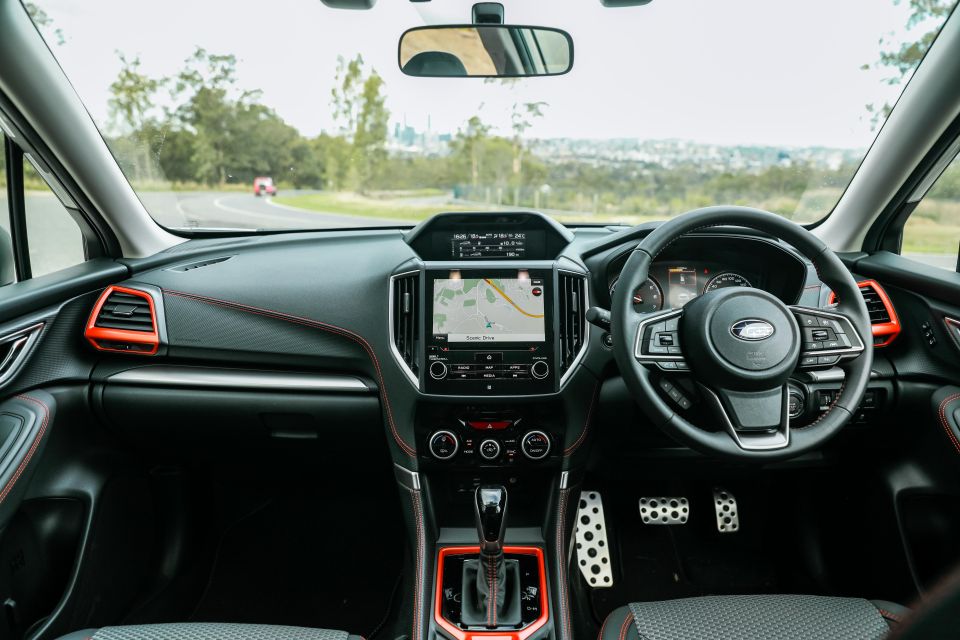
Open the door and you’ll find a cabin that’s both spacious and well-finished. It’s also quite airy thanks to the Forester’s low beltline, which provides excellent visibility.
The dashboard might look a touch dated in its layout but it’s one of the more user-friendly layouts in the class.
Instead of the increasingly fashionable tablet-style, high-mounted touchscreens in rivals like the new Ford Escape, the Forester’s screen is located in the centre stack within easy reach.
The user interface itself is straightforward. Some of the menus may look a little dated but everything is clear and legible, the screen responds quickly to inputs, and the navigation interface is attractive and easy to read.
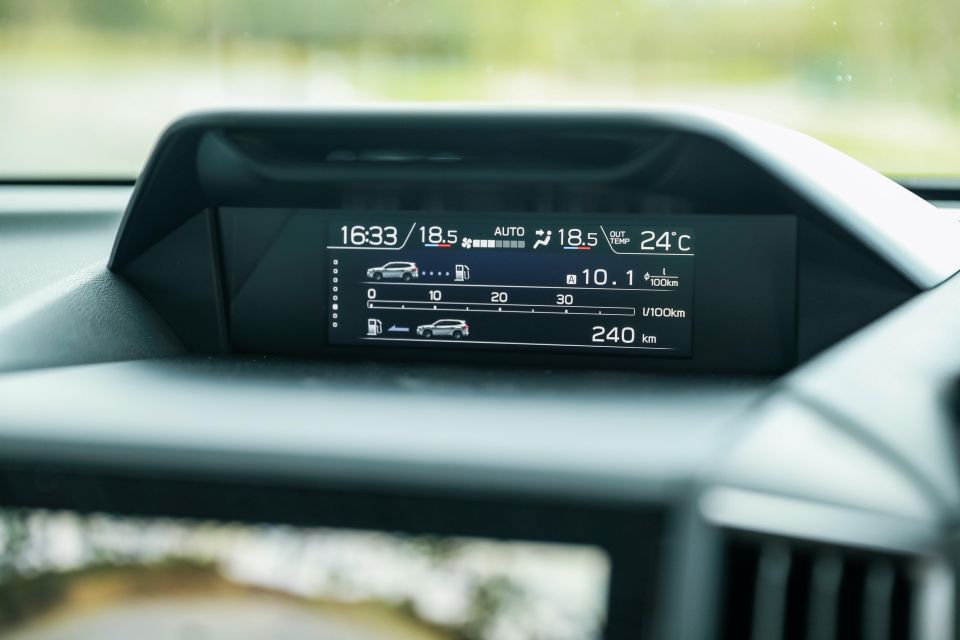
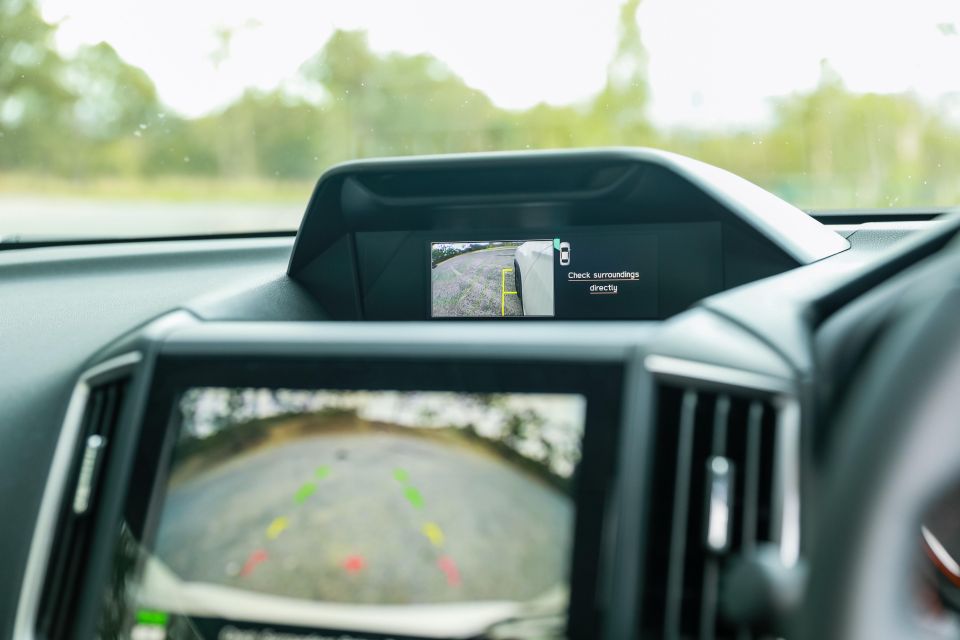

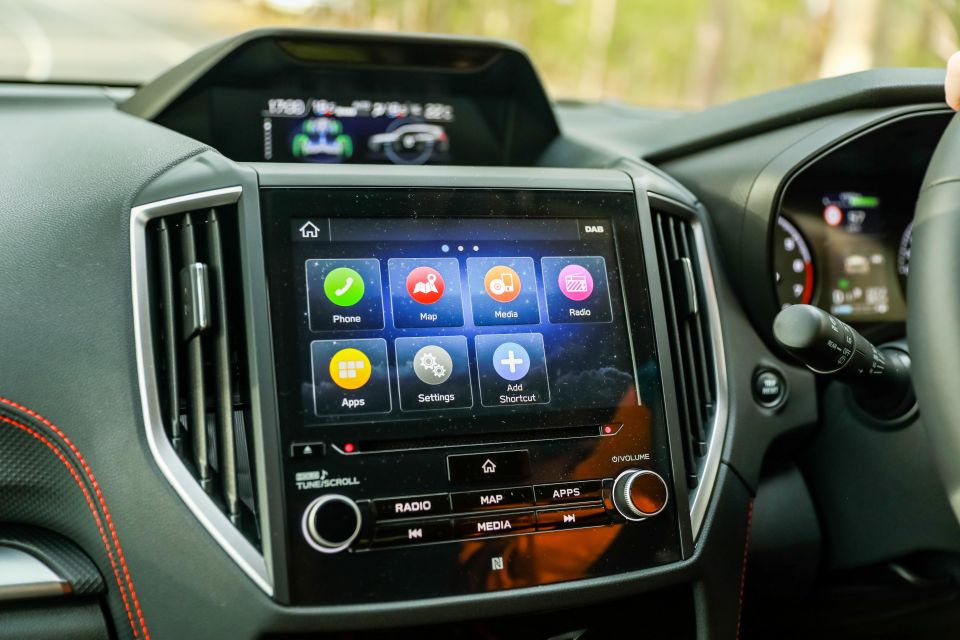
There’s a neat 6.3-inch information display at the top of the dashboard which displays some information you’d typically find in the instrument cluster screen in rivals, such as fuel economy, all-wheel drive system status and location details.
The display works well and helps keep your eyes ahead instead of peering down at a small gauge cluster screen. It also displays the front and side camera views when you’re parking, freeing up space on the main touchscreen for the reversing camera image.
We appreciate having system on/off switches clustered on one part of the dash instead of dotted about the dashboard, like on the Mitsubishi Outlander. You’ll find switches for EyeSight, blind-spot monitoring and other systems to the right-hand side of the steering wheel.
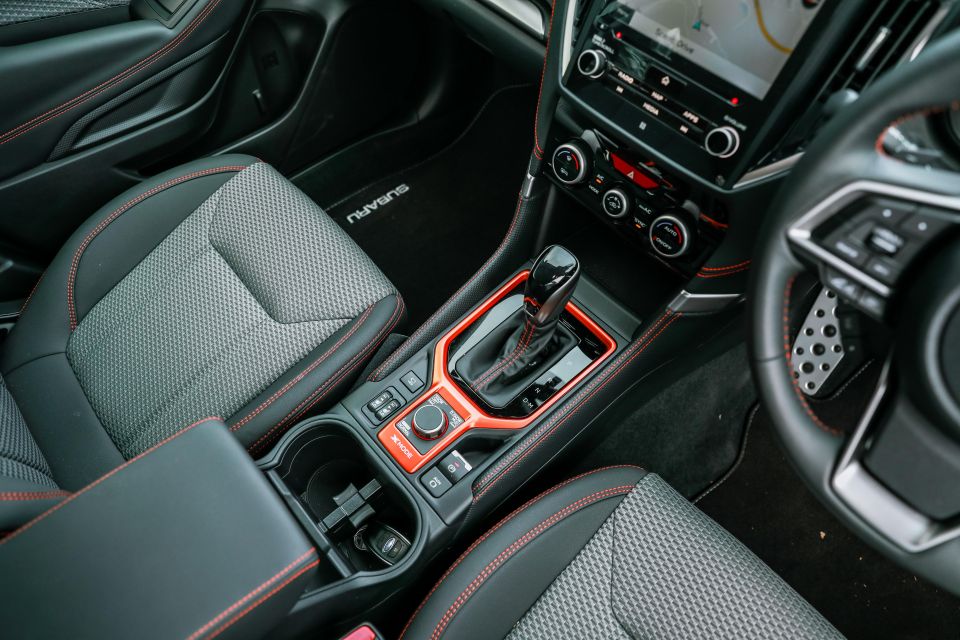
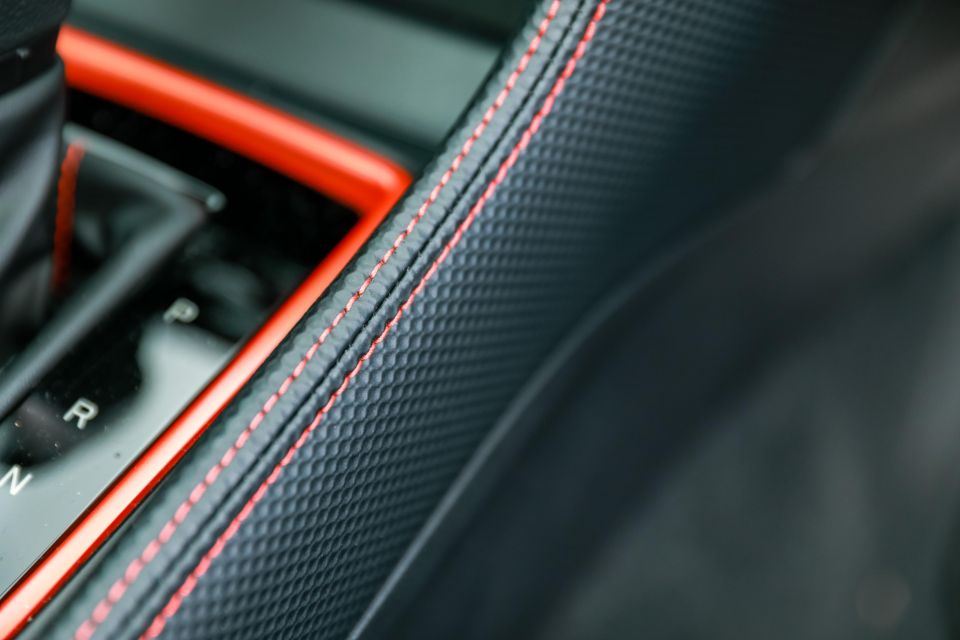
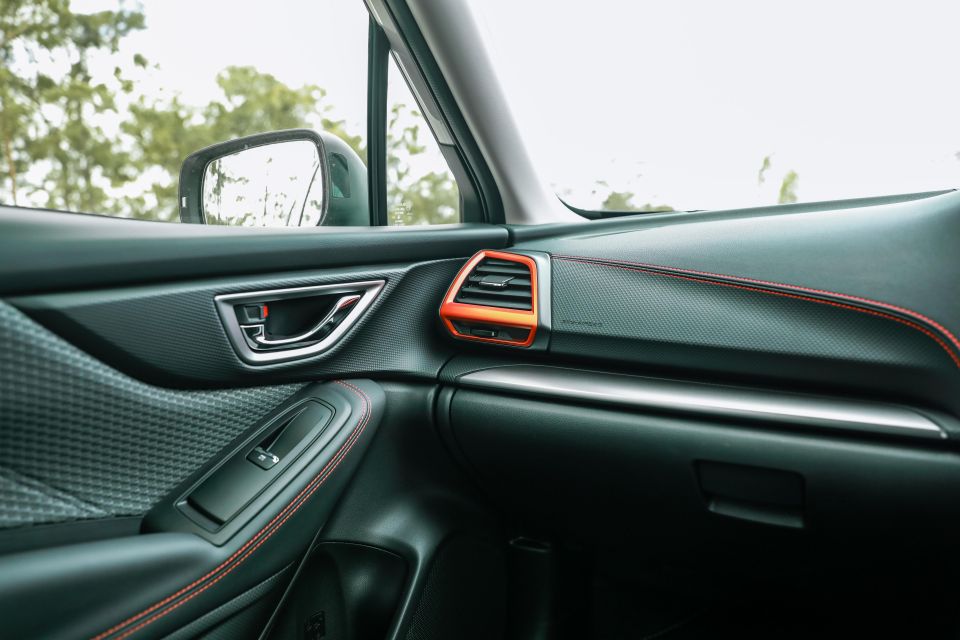
The orange accents of the Sport’s exterior continue inside, with orange stitching elements and orange trim around the vents. It’s all a bit racy for a mid-sized SUV but we’re not going to scoff at a company deciding to actually use colour instead of offering yet another coal-black interior.
There’s a lot of interesting textures in the cabin, from the dimpled leather-look upholstery wrapping the centre console to the plush cloth trim on the seats and doors. The dash top is soft to the touch, while the leather-look trim on the centre console helps to soften a point where your knee may rest – and which, all too often in rivals, is rock hard.
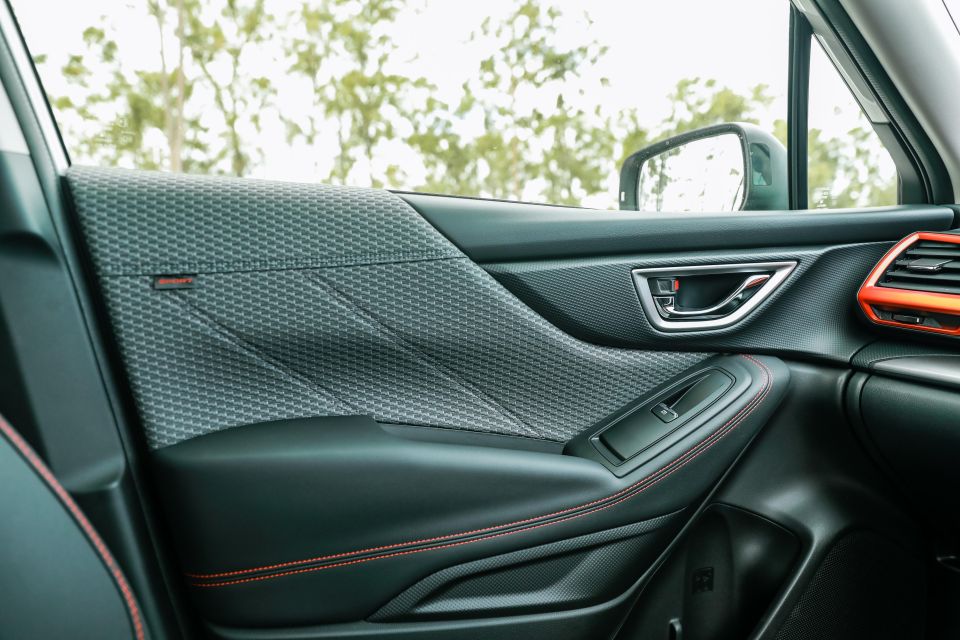

The front seats are power-adjustable and heated. I personally didn’t find the driver’s seat overly comfortable, but that’s going to vary based on your body shape.
Subaru’s choice to use cloth is interesting, with leather available only in the top ‘S’ models. In contrast, Hyundai makes leather available in all but the base Tucson. The Sport’s cloth trim is nice, however, and it’s water-repellant.
The facial recognition camera in the cabin allows you to program your face as a preset, which is a novel idea. Once you’ve done this, all you’ll need to do is step into the car and it’ll move the seats and mirrors accordingly and adjust to the last climate control temperature. There are five facial presets available.
Storage is ample, with a large centre console bin and door bins and a small recess at the base of the centre stack. That recess would make a logical spot for a wireless phone charger but unfortunately this feature isn’t available in the Forester.
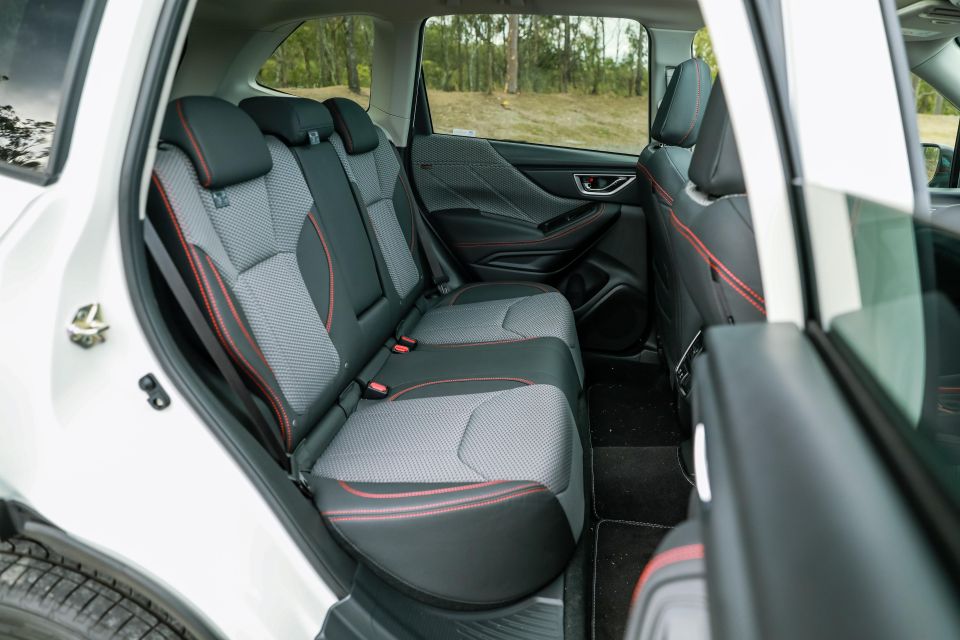
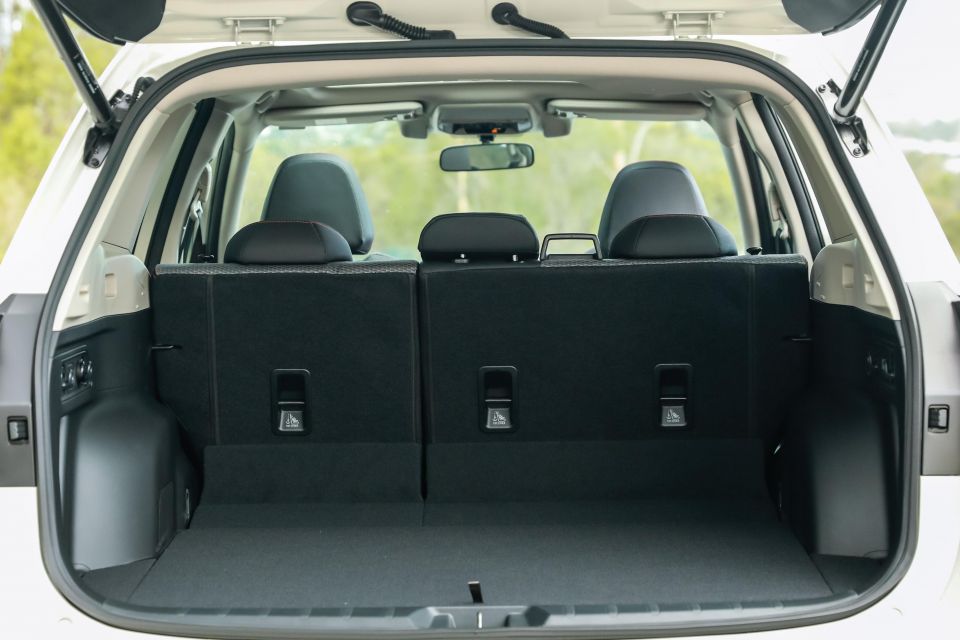
Stepping into the back seat, you’ll find ample headroom and legroom for even tall adults. There are also two USB ports, rear air vents plus two ISOFIX and three top-tether anchor points for child seats.
Luggage space measures 498L, expanding to 1740L with the rear seats down. Underneath the floor you’ll find a full-sized spare.

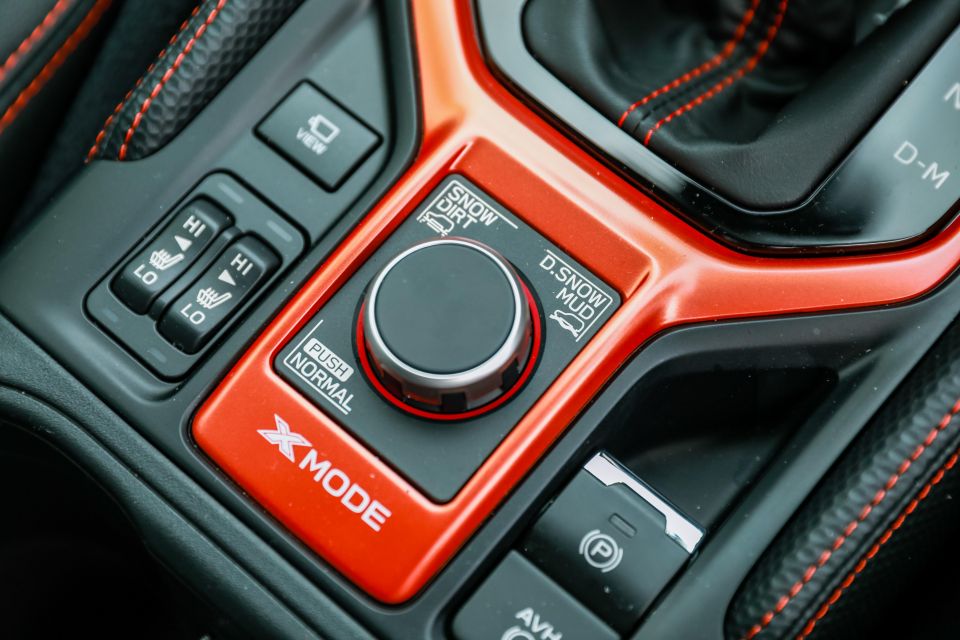
The Forester Sport uses a naturally-aspirated 2.5-litre four-cylinder engine producing 136kW of power and 239Nm of torque. Like all Australian-market Subarus bar the BRZ, it’s all-wheel drive.
It’s mated to a continuously-variable transmission that features paddle shifters, allowing you to shift between simulated gears.
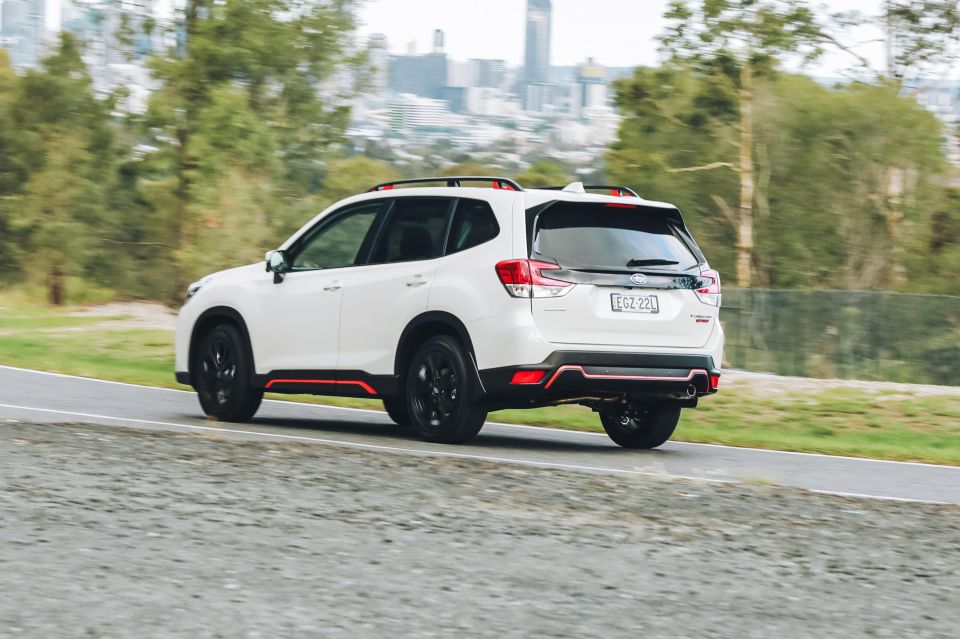
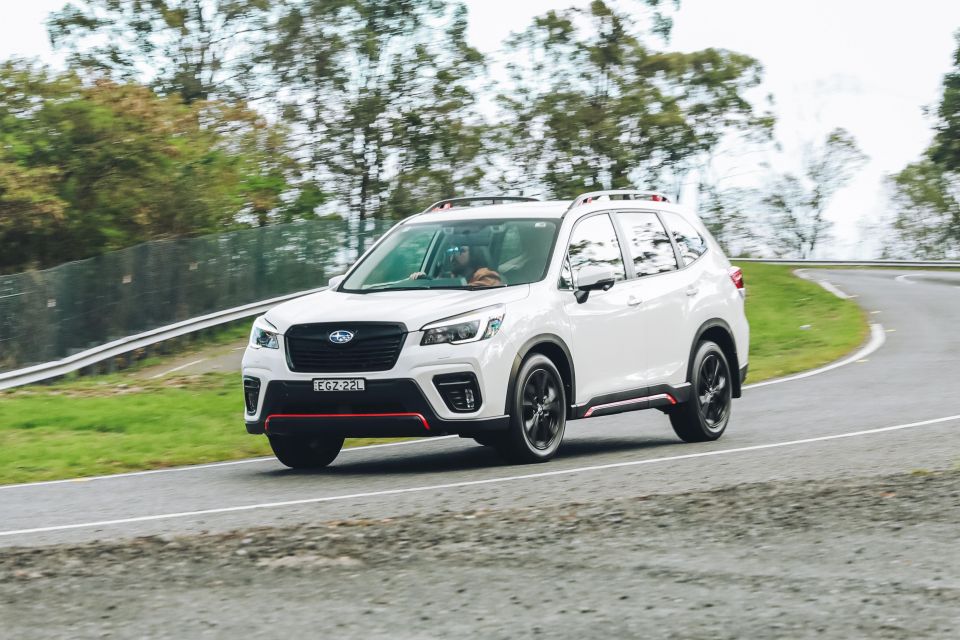
There are no surprises behind the wheel of the Forester, and that’s ideal for most mid-sized SUV buyers.
The steering is a touch light and lacking in feel, but it’s direct and helps make parking and other maneuvering a breeze.
Handling is perfectly acceptable for a mid-sized SUV. Let’s be clear: the Sport badge is in the same vein as the Jeep Cherokee Sport and Kia Seltos Sport, in that this doesn’t add any additional dynamic sparkle. This is a trim package, not some kind of resurrected Forester XT.
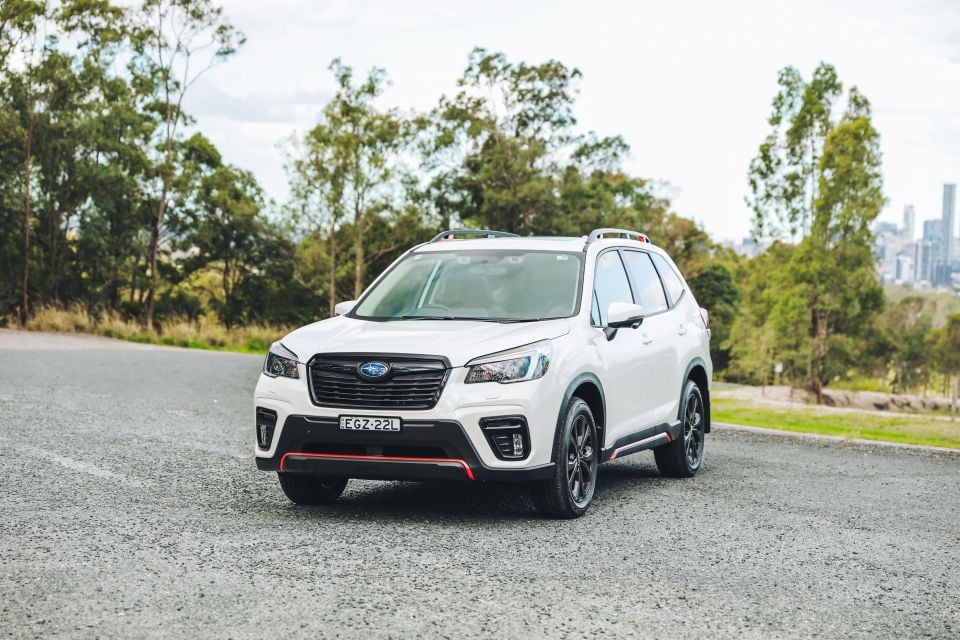
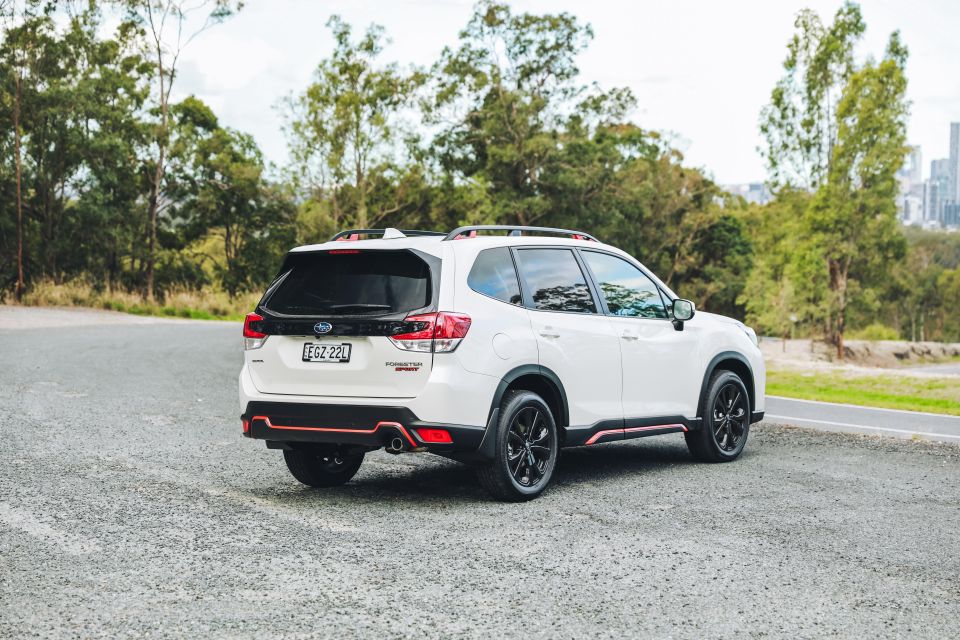
Where expert car reviews meet expert car buying – CarExpert gives you trusted advice, personalised service and real savings on your next new car.
Nevertheless, it handles competitively for the class and doesn’t exhibit too much body lean in corners. It’s not particularly fun, but that kind of driving excitement isn’t easy to find in this segment. What’s more important is that it handles safely and predictably and on this measure the Forester stacks up well.
The ride is a touch firmer than you might expect for a pretty un-sporty Sport but it’s never uncomfortable, comfortably absorbing bumps and impacts without feeling floaty.
Where the Forester disappoints is in the noise it makes under medium to heavy acceleration. If you don’t like CVTs, this isn’t the car for you – it has that same droning sound you’ll find in many cars with this type of transmission.
The flat-four is rather noisy and it’s not a pleasant noise, though again many naturally-aspirated rivals like the Hyundai Tucson aren’t particularly sonorous, either. At least road and wind noise is well-contained, even at highway speeds.
One other refinement issue is the stop/start system, which sends a shudder through the vehicle. It’s not the worst we’ve experienced but it isn’t as smooth as in some rivals.
Some of the Forester’s technology can be a little overbearing.
If you drop below 60km/h, a warning chime will sound and an image will appear in the instrument cluster screen to warn the lane-keeping assist has turned off. Likewise, an alert will appear on the screen warning you to be aware of your surroundings – thank you but I was, before you told me to look down at the screen.
The lane-departure warning seems to want to pre-warn you before you even cross the lines.
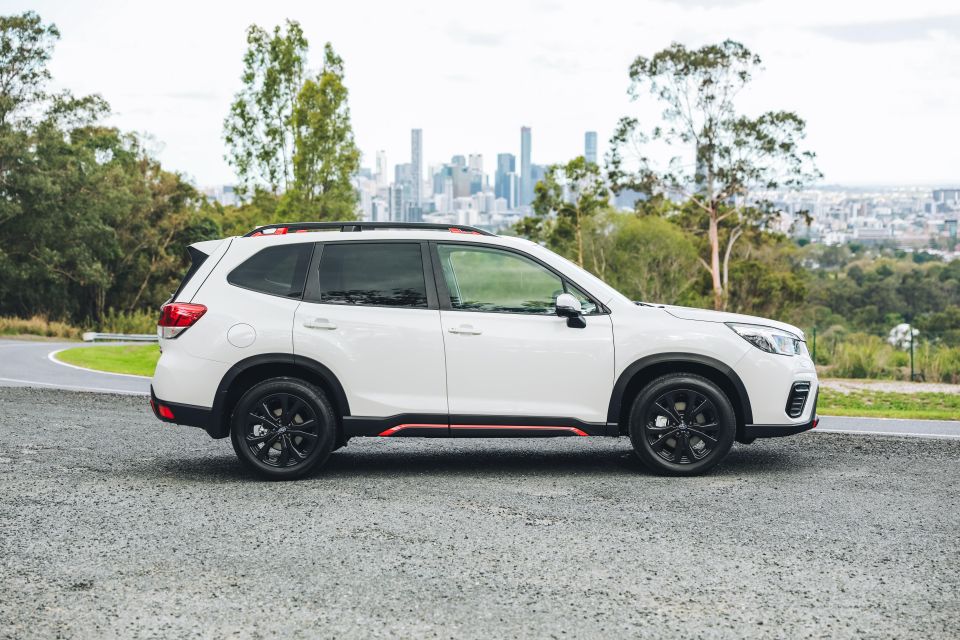
EyeSight is pretty clever, though. It’s not infallible, as I learned when I put my hand over my mouth which set it off on an endless string of reminders to watch the road. However, it does a good job of prodding you when your focus has been taken off of the road ahead.
To change it to Sport mode, you don’t use the X-Mode drive mode dial on the centre console. Instead, it’s less intuitively controlled via the S/I button on the right-hand side of the steering wheel.
That’s next to a button labelled LIM which allows you to set a maximum speed. Don’t worry, all the other steering wheel buttons appear logical though there does seem to be a lot of them.
The X-Mode dial allows you to toggle between off-road modes for specific driving environments, such as dirt and mud, and includes hill descent control. While the Forester mightn’t be able to scale Kilimanjaro, it does boast more ground clearance than key rivals – 220mm, compared to 190mm in the Toyota RAV4, 193mm in the Mazda CX-5 and just 172mm in the Hyundai Tucson.

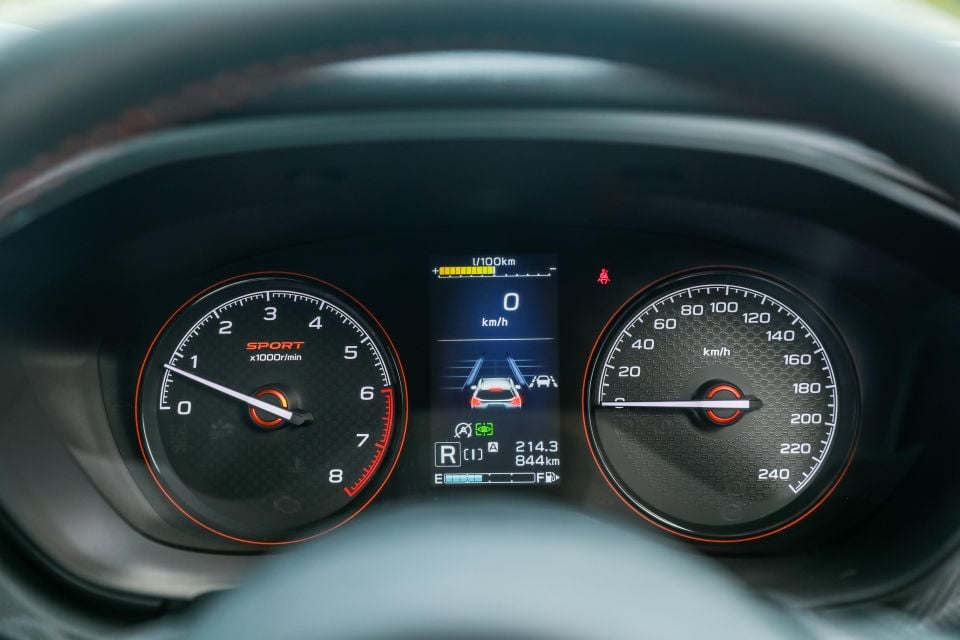
Subaru claims combined fuel economy of 7.4L/100km, though we averaged 8.8L/100km in our fuel economy loop which includes a mix of city, highway and suburban driving.
The Forester is backed by a five-year, unlimited-kilometre warranty. Subaru also offers three- and five-year servicing plans costing $1269.15 and $2413.63, respectively. That works out to an average of $423 or $482 per service, which are due every 12 months or 12,500km.
In contrast, Toyota charges a flat fee of $215 per visit for the RAV4 over the first four years. A Hyundai Tucson 1.6 averages $317 per service over the first five years of ownership while a Kia Sportage averages $385 and the Mitsubishi Outlander’s first five services are capped at $299. That puts the Forester at the pricier end of the spectrum in terms of servicing.

Subaru buyers are loyal and their loyalty won’t be misplaced with the Forester.
While it isn’t the most dynamic choice in its segment despite what the Sport’s jazzier trim suggests, it remains a capable mid-sized SUV. It has an airy, spacious and ergonomically-friendly cabin, some smart technology like EyeSight, and a good amount of standard kit for the price.
We don’t love the sound the powertrain makes and the service prices are a bit high for the segment. Otherwise, there aren’t many criticisms we can level at this crossover which boasts an all-round competence that should earn it a spot on your mid-sized SUV shopping list.
Overall, so long as you’re aware this isn’t some resurrected Forester XT, we suspect you’ll be happy with your Forester Sport. We just hope you like orange.
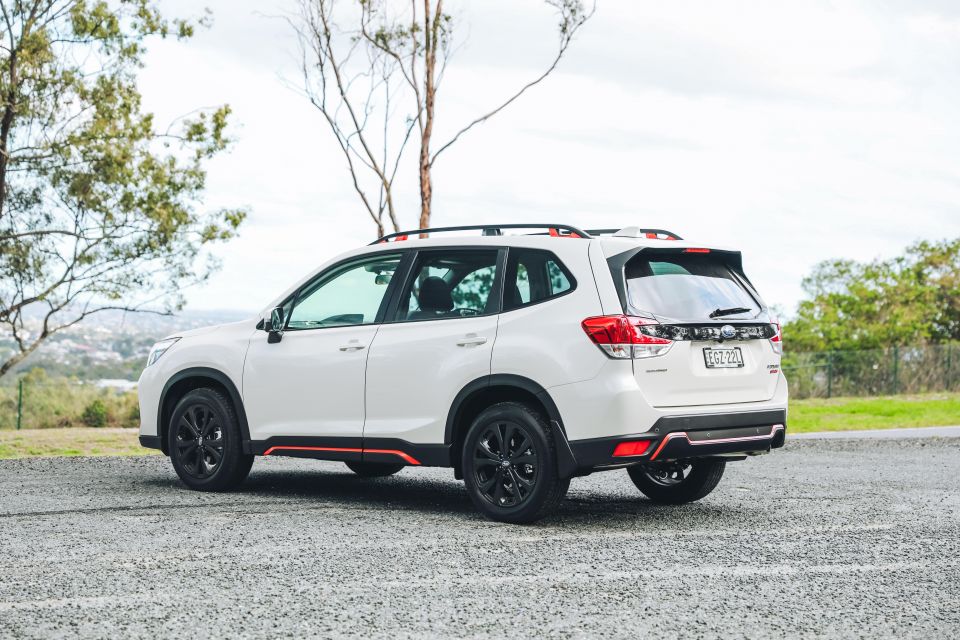
Click on the images for the full gallery
MORE: Subaru Forester news and reviews MORE: Subaru news and reviews
Where expert car reviews meet expert car buying – CarExpert gives you trusted advice, personalised service and real savings on your next new car.
William Stopford is an automotive journalist with a passion for mainstream cars, automotive history and overseas auto markets.


Matt Campbell
5 Hours Ago


Max Davies
21 Hours Ago


William Stopford
21 Hours Ago


Derek Fung
21 Hours Ago


Max Davies
1 Day Ago


William Stopford
2 Days Ago